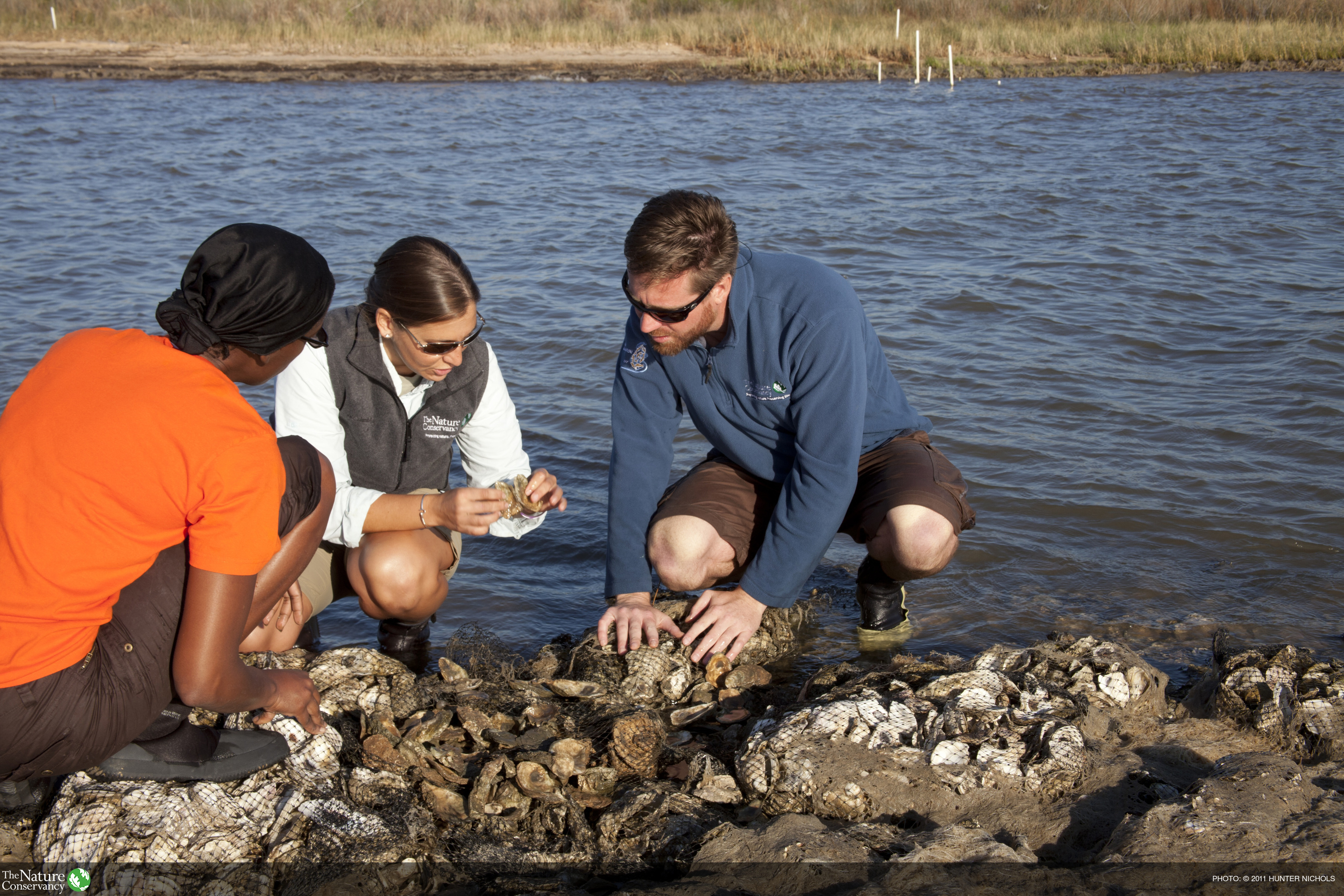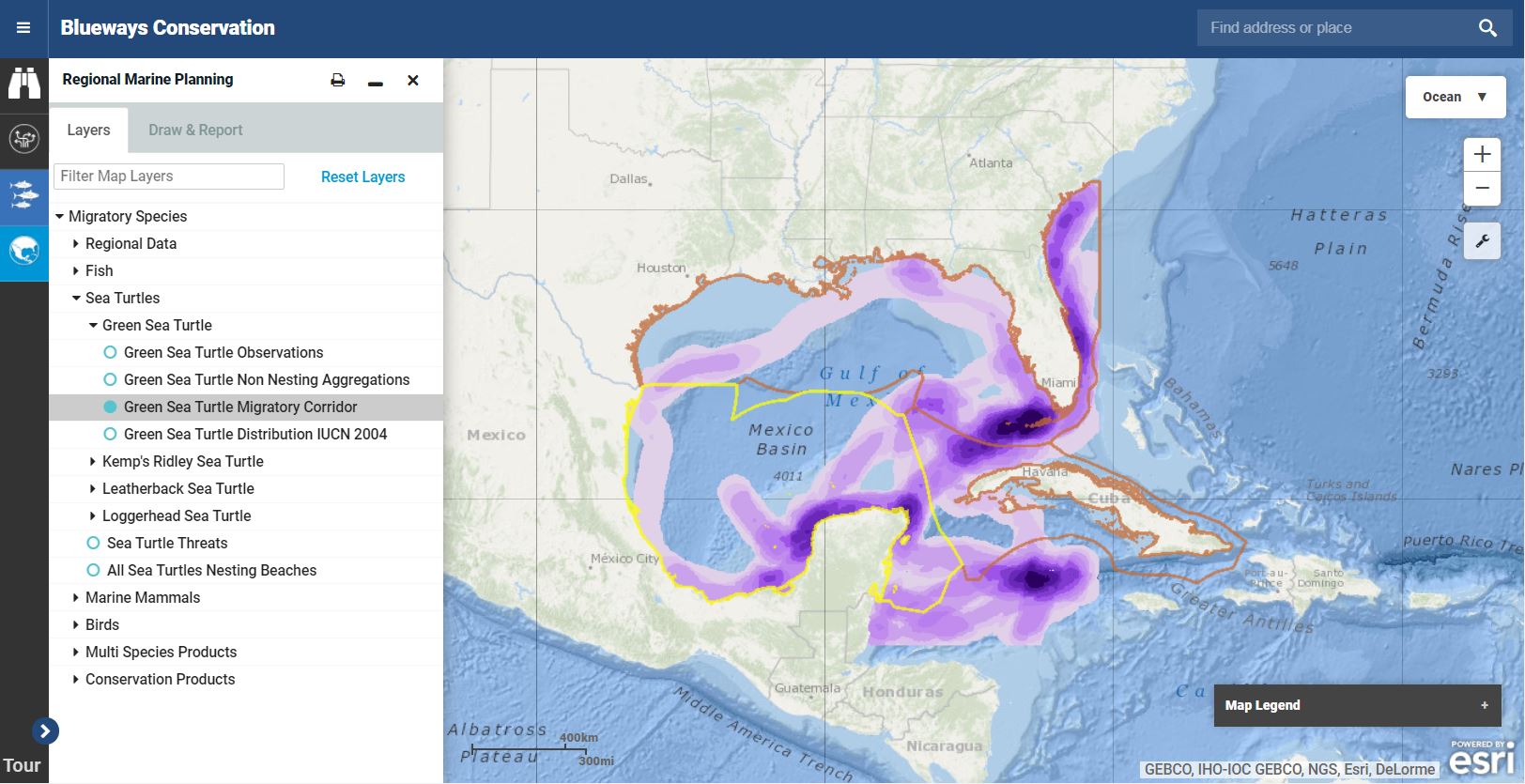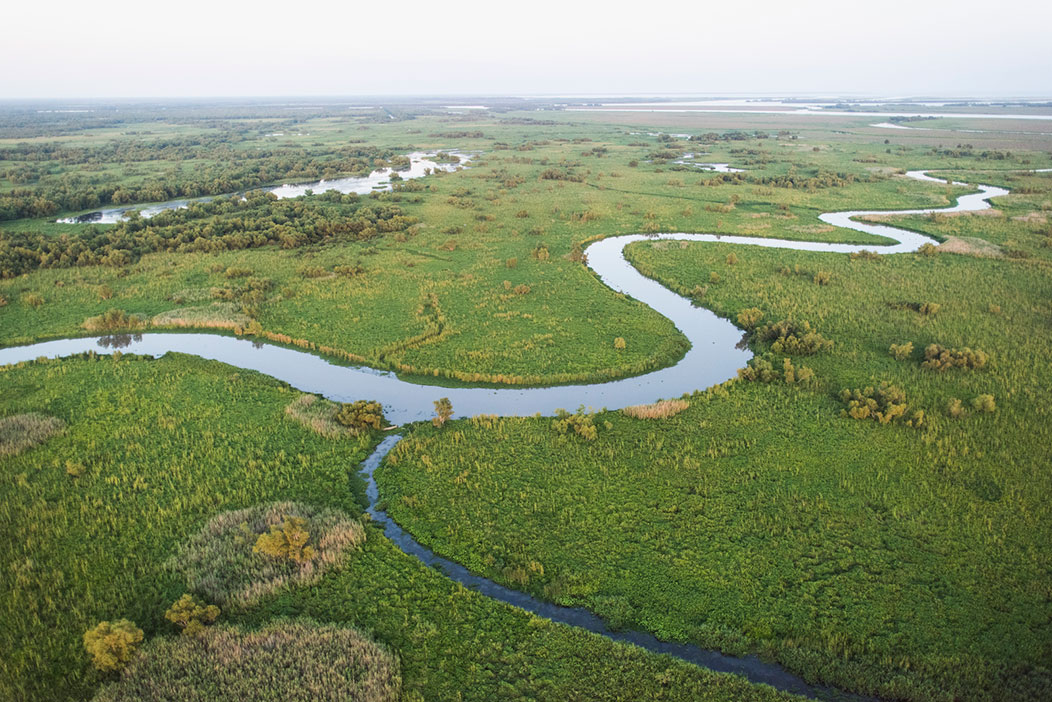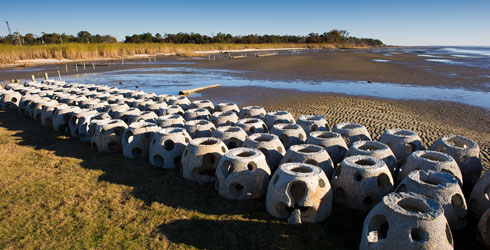Gulf of Mexico
Florida, Mississippi, Alabama, Louisiana and Texas are using Coastal Resilience 2.0 to identify restoration projects with maximum socio-economic and ecological benefits and examine future flood scenarios from storm events and sea level rise.
The Gulf of Mexico’s marine and estuarine ecosystems are the foundation of life in the Gulf and form the backbone of the region’s economy. But the Gulf has seen about half of its coastal habitats vanish during the past century. As a result of these losses, species have declined and the resilience of the coast in the face of natural and man-made disturbances has been compromised. The oil spill, and Hurricane Katrina before that, showed starkly how people and the economy are vulnerable when natural habitats are deeply compromised by long term degradation and impacts.
The region must re-establish the strong, resilient natural communities that for centuries have protected people and wildlife from storms and provided a wealth of fishery production and biodiversity.
The oil spill has focused attention on the Gulf of Mexico and with the passage of the RESTORE Act there is an opportunity to effectively restore Gulf habitats; if we use resources well. There is an urgent need to quickly provide information to decision-makers, scientists and other key stakeholders who must evaluate the best options for recovery and restoration investments.
Overview
Losing our Vital Natural Resources Coastal communities across the Gulf of Mexico are vulnerable to coastal storms and land loss. More than 7,000 square miles of the US Gulf Coast is below 5 feet in elevation and the Gulf Coast has been subject to numerous catastrophic storms since 1900. Furthermore, coastal areas are more vulnerable each year because of sea level rise, coastal wetland loss, coastal development and the likelihood that storms may increase in intensity. These changes threaten buildings, infrastructure, people and natural areas. These natural areas frequently include habitats such as salt marshes, mangroves and oyster reefs that provide valuable ecosystem services or ‘benefits’. These benefits include water quality improvements, shoreline protection, recreation and tourism benefits, and fisheries production. Many coastal communities do not fully understand or recognize that these habitats can provide these benefits. Importantly, coastal communities rarely consider the role that their natural areas can play in reducing erosion and storm impacts. Decision-makers need the best available science and information about the benefits of nature if they are to manage human and natural communities in the face of the storms, sea level rise and habitat loss.

Waves due to boats, storms and currents are eroding away coastal Alabama. These shorelines are important habitats for birds but also fish, shrimp and crabs, acting as “factories” that produce some of our nations best seafood. Photo credit: Jeff DeQuattro/The Nature Conservancy
Socioeconomic
Economic assets at risk
In the Gulf of Mexico, storms, sea level rise and coastal erosion threaten millions of people, local businesses and the overall resiliency of the natural systems and coastal infrastructure. In 2005 alone, as a result of Hurricanes Katrina and Rita, flood insurance policy holders in Alabama, Florida, Louisiana, Mississippi, and Texas submitted over 165,000 flood insurance claims to the NFIP, totaling $16 billion in paid claims. The number of claims submitted to the NFIP in 2005 was more than the combined total number of claims from the preceding 35 years of the NFIP’s existence.
More than 7,000 square miles of the Gulf Coast including large urban centers like Houston and New Orleans lie only 4 feet above existing sea. These low-lying areas include vital infrastructure assets such as interstates, rail lines, ports, and airports that are essential to the local and national economy. Due, in part, to the gulf’s dramatically high rate of coastal wetland loss, these vital infrastructure assets are at major risk from flooding caused by heavy rain and storm surges. The communities along the Gulf coast have a rich culture that is strongly connected the warm waters of the Gulf of Mexico. This connection is both social and economic and the livelihoods of many coastal residents depend upon the health of the Gulf. A large segment of the population makes its living from the land and water: fishing, shrimping, tourism, agriculture. Their livelihoods depend on natural resources in a very real way. Any disruptions to the environment—whether natural or man-made—can strike a devastating blow to businesses and communities. The vulnerability of much of the coastal population depends directly upon the health of the Gulf.
Combine these two factors—social vulnerability and exposure to hazards like storms and sea level rise—and you have a region that experiences risk in a fundamental way.

Aerial view of Grand Isle, a barrier island located in the Gulf of Mexico at the mouth of Barataria Bay in Louisiana. Using Reefblk™–a reef design made from American steel—and recycled oyster shells, the Conservancy and its partners created 3-4 miles of oyster reef habitat along the Grand Isle shoreline with the goal of protecting and restoring shoreline habitat and creating living oyster reefs as a sustainable option for reducing erosion of coastal marshes, protecting communities from storm surge. Photo Credit: Erika Nortemann/The Nature Conservancy
Habitats and Species
Healthy habitats and species are essential to the economies and livelihoods of people who live in and depend on the Gulf of Mexico.
Oyster Reefs: play and essential role in ecosystems and economies in the Gulf of Mexico. Most efforts to date include the restoration of oyster reefs that play an important role in protecting shoreline from waves that continue to erode the coast. Click here for more information on the importance of oyster reef habitat. For restoration projects by state:
Alabama – Mobile Bay Alabama – NOAA Restoration Project Louisiana – Oyster restoration overview Louisiana – Vermilion Bay Louisiana – Grand Isle & St. Bernard Marsh Texas – Half Moon reef

Jeff DeQuattro, Marine Program Director for the Nature Conservancy in Alabama examines young oysters growing on artificial reefs at an oyster restoration site at Alabama Port. The 100-1000: Restore Coastal Alabama concept was born out of the success of the Conservancy’s ARRA-funded project which restored nearly 3 miles of oyster reefs in Mobile Bay using three different techniques: bags of oyster shells, Reef Balls and ReefBLK(tm). These same techniques are being used to build the 100 miles of oyster reef for the 100-1000 project. Photo credit: Andrew Kornylak
Natural Defenses
Re-Engineering the Gulf of Mexico Erosion is one of Gulf of Mexico’s most persistent threats. In the past, abundant habitats – oyster reefs, seagrass beds, salt marshes and coastal forests – fringed the Gulf, absorbing the constant energy of wind and waves, and reducing the impacts of coastal hazards on communities and the shoreline. Unfortunately, the last 100 years have seen dramatic changes to the Gulf Coast and much of that once-vast buffering habitat has been destroyed or severely damaged.
Fortunately, nature – especially in the Gulf of Mexico – is incredibly resilient. With the restoration of habitats, such as oyster reefs, that provide a buffer for coastal communities, comes the restoration of Gulf communities’ resilience – economically and ecologically. Restoration is the gift that keeps on giving, especially if projects are planned and implemented to maximize the return on investment of public and private funds.
As part of restoring resilience of the Gulf Coast, the Conservancy and the Natural Capital Project are helping to accelerate and expand oyster reef restoration. In many ways, restoring oyster reefs in the Gulf embodies the concept of triple-bottom line (social, economic and environmental) benefits. As much as any other habitat, oysters are foundational to the health and abundance of the Gulf. They contribute to increased catches of fish and crabs that rely on oyster reefs for food or shelter, and protect the water quality that is so important for tourism and fisheries by removing nitrogen that causes algae blooms and dead zones.
Additionally, because oyster reefs can reduce coastal erosion and stabilize shorelines, the Conservancy and Natural Capital have developed an innovative Coastal Defense app that allows planners and managers to evaluate where and how restored oyster reefs may be used to help protect shorelines from erosion while simultaneously stimulating a recovering fisheries economy.

545 volunteers working to help the Restore Coastal Alabama Project restore oyster reefs in Helen Wood Park, Mobile Bay, AL. Photo credit: 2011 Erika Nortemann/TNC.
Migratory Species Conservation Project
The Nature Conservancy is also studying migratory species pathways and threats to migration in the Gulf of Mexico. Understanding the migratory strategies and corridors of fish, sea turtles, marine mammals, and birds is critical for marine conservation planning and assessment of the health of the Gulf of Mexico large marine ecosystem. Similarly to Coastal Resilience, the Migratory Species Conservation project consists of a framework for assessing conservation needs, a web mapping tool to support vitalization and analysis of their movements and threats, and a team of scientists and partnering institutions working to collect new data and improve its analysis. Find out more at http://migratoryblueways.org/tools or launch application.

Resources
For the latest reports, publications and other resources on Coastal Resilience in the Gulf of Mexico visit the Coastal Resilience Resource Library on the Conservation Gateway.








